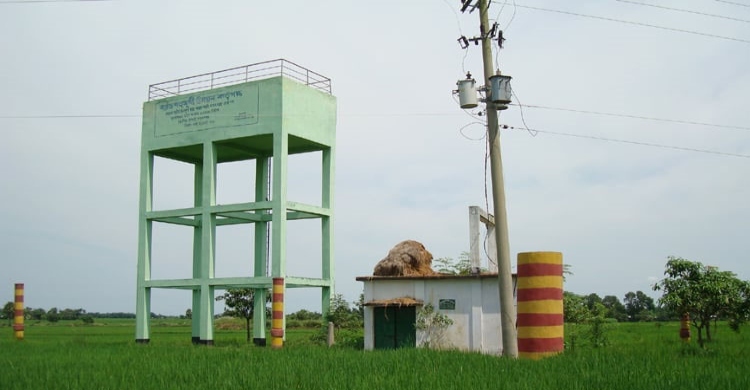18 lakh people get safe drinking water thru pipeline in Barind


More than 18 lakh villagers, including those living in the high Barind tract, are now getting safe drinking water through pipeline facilities, due to the installation of need-based infrastructure in the drought-affected region.
The Barind Multipurpose Development Authority (BMDA) has been supplying arsenic-free drinking water to people in many areas of the dried tract.
Over the past two decades, the BMDA has installed more than 1,715 water supply installations and 670 dug wells across 25 upazilas in Rajshahi, Naogaon, and Chapainawabganj districts under the Barind region.
The state-owned BMDA, the country's largest irrigation-providing agency, constructed these installations alongside requisite pipeline networks to ensure safe drinking water supply to remote areas.
Talking to BSS, BMDA Executive Director Tariqul Alam said the initiative was undertaken to address the acute drinking water crisis in the drought-prone Barind region, especially during the dry season.
He said in addition to extending the water supply installations, necessary chemicals and laboratory equipment have been arranged to make the water arsenic-free and safe from other harmful contaminants.
"The main objective of this venture is to ensure year-round supply of potable water to people in the targeted areas," Alam added.
He observed that the shortage of drinking water has become increasingly severe in recent years. Traditional shallow water technologies have lost their effectiveness, while the demand for deep tube wells has increased due to the rapid decline of the groundwater table and arsenic contamination in shallow aquifers.
However, the high cost of deep tube wells remains unaffordable for poor communities, leaving public health in a vulnerable state due to a lack of proper sanitation facilities and inadequate hygiene practices.
Farmers are also becoming increasingly vulnerable due to excessive groundwater extraction for irrigation. The adverse impacts of climate change have further depleted the groundwater table, causing many hand-driven tube wells to become inoperative, resulting in a widespread drinking water shortage.
"In this context, the initiative to supply piped water to remote villages, particularly those near functioning irrigation deep tube wells, is a timely and sustainable solution," Alam said.
He mentioned that, similar to urban areas, the piped supply system in rural regions is more dependable and has already helped in reducing waterborne diseases caused by unsafe drinking water.
Highlighting some of the additional benefits, he said the supplied water is also being used for livestock, kitchen gardens, and homestead afforestation, significantly contributing to rural development and improved living standards.
Maity Saren, 48, a resident of Rahi village under Godagari upazila, expressed her satisfaction over the new water facilities.
"We had to face various problems fetching water for our four-member family," she said, adding that the situation has now improved.
Another villager, Shyamoly Hasda, 40, wife of Sukhen Saren, shared a similar sentiment. She said her seven-member family is now getting the required amount of safe water without hardship.
Prof Niamul Bari of the Civil Engineering Department at Rajshahi University of Engineering and Technology (RUET) said the situation worsens during the dry season as the groundwater layer drops significantly, making tube wells ineffective.
He noted that the adverse impact of climate change is posing a serious threat to public health in the vast Barind tract, especially in Tanore, Godagari, Nachole, and Gomostapur upazilas.
"Climate change is altering the nature of droughts in the Barind tract by increasing temperatures and causing erratic rainfall, which affects the timing of monsoon onset and withdrawal," Prof Bari said.
He pointed out that the Barind region is one of the worst-hit by droughts in the country, with the number of consecutive dry days and average temperature steadily increasing over the last 30 years. Drought episodes have also become more erratic-a trend likely to worsen in the coming decades.
"During dry spells, natural surface water sources often dry up, leaving no water for drinking, sanitation, or agriculture," he said.
The overall human cost, he added, includes a rise in disease incidence-especially among children-malnutrition from crop failure, increased poverty, and stunted development.
Prof Bari also said the Barind region receives an average annual rainfall of 1,400 mm, far below the national average of 2,300 mm. Rainwater does not easily seep into aquifers due to the clayey nature of the soil, leading to high evaporation rates.
Moreover, the absence of large surface water sources-such as lakes and rivers-means groundwater recharge is extremely slow. As a result, traditional hand-pumped tube wells that depend on shallow aquifers often become inoperative during droughts, creating a critical water crisis for rural populations.
